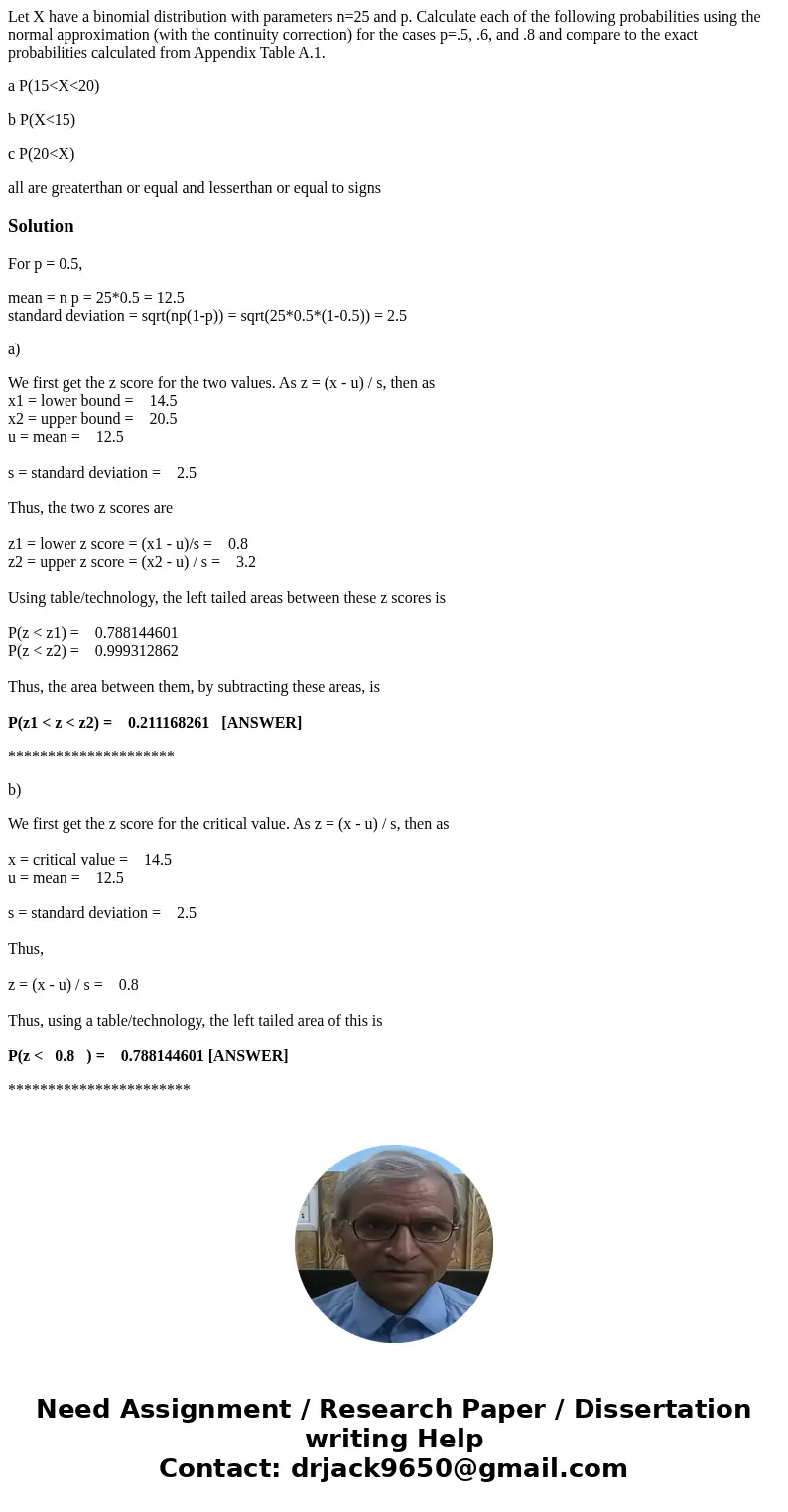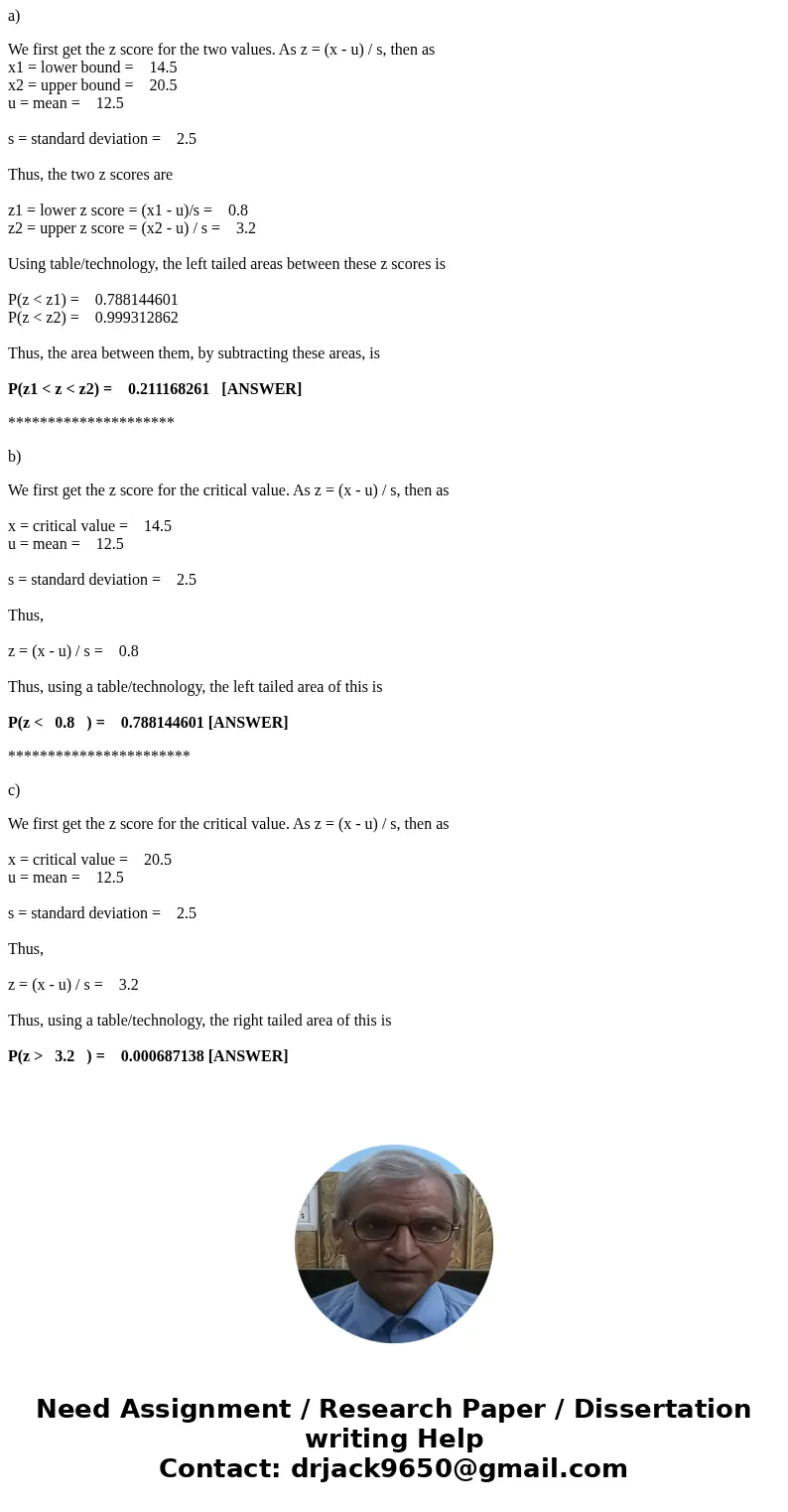Let X have a binomial distribution with parameters n25 and p
Let X have a binomial distribution with parameters n=25 and p. Calculate each of the following probabilities using the normal approximation (with the continuity correction) for the cases p=.5, .6, and .8 and compare to the exact probabilities calculated from Appendix Table A.1.
a P(15<X<20)
b P(X<15)
c P(20<X)
all are greaterthan or equal and lesserthan or equal to signs
Solution
For p = 0.5,
mean = n p = 25*0.5 = 12.5
standard deviation = sqrt(np(1-p)) = sqrt(25*0.5*(1-0.5)) = 2.5
a)
We first get the z score for the two values. As z = (x - u) / s, then as
x1 = lower bound = 14.5
x2 = upper bound = 20.5
u = mean = 12.5
s = standard deviation = 2.5
Thus, the two z scores are
z1 = lower z score = (x1 - u)/s = 0.8
z2 = upper z score = (x2 - u) / s = 3.2
Using table/technology, the left tailed areas between these z scores is
P(z < z1) = 0.788144601
P(z < z2) = 0.999312862
Thus, the area between them, by subtracting these areas, is
P(z1 < z < z2) = 0.211168261 [ANSWER]
*********************
b)
We first get the z score for the critical value. As z = (x - u) / s, then as
x = critical value = 14.5
u = mean = 12.5
s = standard deviation = 2.5
Thus,
z = (x - u) / s = 0.8
Thus, using a table/technology, the left tailed area of this is
P(z < 0.8 ) = 0.788144601 [ANSWER]
***********************
c)
We first get the z score for the critical value. As z = (x - u) / s, then as
x = critical value = 20.5
u = mean = 12.5
s = standard deviation = 2.5
Thus,
z = (x - u) / s = 3.2
Thus, using a table/technology, the right tailed area of this is
P(z > 3.2 ) = 0.000687138 [ANSWER]


 Homework Sourse
Homework Sourse